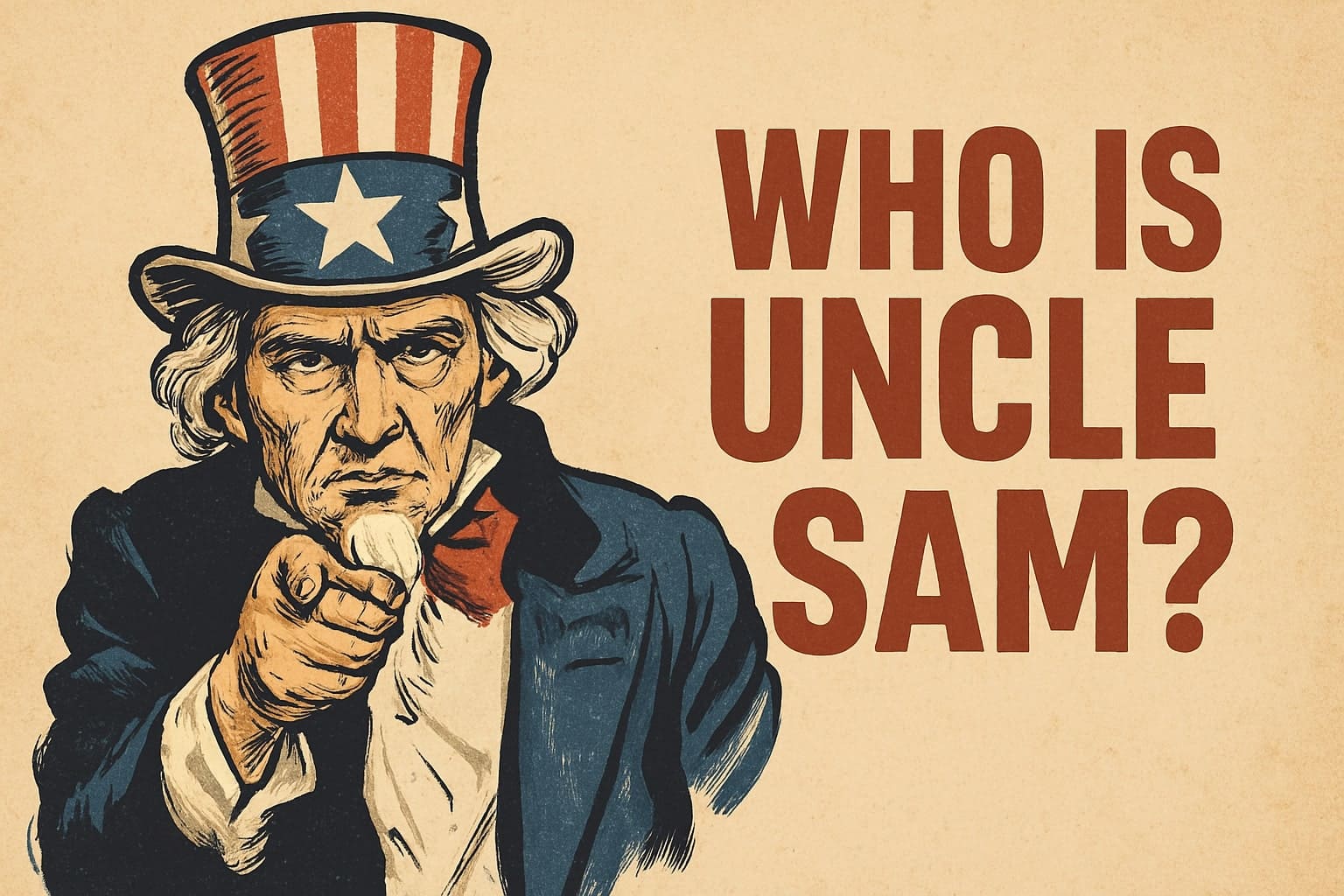Who Is the Old American Guy “Uncle Sam” and Why Is He on So Many U.S. Propaganda Posters?
You’ve probably seen him: tall, stern, dressed in red, white, and blue, with a pointed finger demanding “I Want YOU for U.S. Army!” That iconic image has been etched into American history, but many don’t know who Uncle Sam really is, where he came from, or why he became such a central figure in U.S. propaganda and political symbolism. Here’s a deep dive into the origins of Uncle Sam, what he represents, whether he’s based on a real person, and the controversies surrounding his image.
When Was Uncle Sam Created?
The character of Uncle Sam first became popular during the War of 1812, but his roots go back even earlier.
- The name “Uncle Sam” was first recorded in 1813 in reference to Samuel Wilson, a meat packer from Troy, New York.
- Wilson supplied barrels of beef to the U.S. Army and stamped them with “U.S.” for United States. Soldiers jokingly began calling the food from “Uncle Sam.”
- Over time, “Uncle Sam” became a nickname for the U.S. government itself.
In 1861, political cartoonist Thomas Nast, known for creating the modern Santa Claus, gave Uncle Sam a face and personality in editorial cartoons.
However, the most iconic version of Uncle Sam was created by James Montgomery Flagg in 1917 for a World War I U.S. Army recruitment poster. This is the version still used today.
What Does Uncle Sam Symbolize?
Uncle Sam is a personification of the United States government. He represents:
- Nationalism and patriotism
- Authority and government power
- Military recruitment and duty
- American values, particularly during war or political campaigns
He’s often used to inspire action, especially in wartime propaganda, where he symbolizes a call to service or sacrifice for the nation.
Is Uncle Sam Based on a Real Person?
Yes, Uncle Sam is widely believed to be based on Samuel Wilson, the meat supplier mentioned earlier.
- In 1961, the U.S. Congress officially recognized Samuel Wilson as the progenitor of the Uncle Sam character.
- Wilson was born in Massachusetts in 1766 and died in 1854.
- His contributions during the War of 1812 created a lasting connection between the initials “U.S.” and the nickname “Uncle Sam.”
While artistic interpretations have changed over the decades, the roots of Uncle Sam remain grounded in real American history.
Why Is Uncle Sam Used in Propaganda Posters?
During World War I and II, propaganda was a key tool used to mobilize public opinion and encourage enlistment, rationing, and war bond purchases. Uncle Sam was the perfect embodiment of national duty.
- The 1917 recruitment poster by Flagg, featuring Uncle Sam pointing with the caption “I Want YOU for U.S. Army”, became one of the most recognized images in American history.
- It was widely used again during World War II.
- The image has since been adapted for various political, cultural, and commercial purposes.
His look- top hat, blue jacket, white beard, and stern expression- is deliberately designed to be memorable and authoritative.
Is Uncle Sam Considered Offensive?
While Uncle Sam remains a powerful national symbol, some critics argue that he represents:
- Militarism or blind nationalism
- Government coercion, particularly during the draft era
- Exclusionary ideals, especially when used in contexts that promote war or suppress dissent
In modern pop culture, Uncle Sam has been parodied and criticized, especially in anti-war or satirical media. But overall, he is not widely considered offensive—rather, he is viewed as a historical relic of patriotic messaging.
Final Thoughts
Uncle Sam has stood the test of time as a symbol of America’s government, spirit, and identity. From war posters to political cartoons, he continues to evoke a strong emotional response—sometimes patriotic, sometimes critical.
Whether he inspires you to serve your country or makes you reflect on the power of propaganda, one thing’s certain: Uncle Sam is not just an old guy in a top hat—he’s an icon of American history.
Did You Know?
- The Uncle Sam poster is modeled after James Montgomery Flagg himself, who used his own face as the reference.
- The image has been reused, redesigned, and remixed in countless ways—from rock bands to political campaigns.
For more fascinating American history breakdowns and cultural deep-dives, stay connected with our updates.


